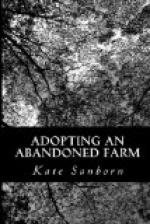“The under part of the canopy is embroidered with pearls and diamonds, with a fringe of pearls round about. On the top of the canopy, which is made like an arch with four panes, stands a peacock with his tail spread, consisting all of sapphires and other proper-colored stones; the body is of beaten gold enchased with several jewels, and a great ruby upon his breast, at which hangs a pearl that weighs fifty carats. On each side of the peacock stand two nosegays as high as the bird, consisting of several sorts of flowers, all of beaten gold enameled. When the king seats himself upon the throne, there is a transparent jewel with a diamond appendant, of eighty or ninety carats, encompassed with rubies and emeralds, so hung that it is always in his eye. The twelve pillars also that support the canopy are set with rows of fair pearls, round, and of an excellent water, that weigh from six to ten carats apiece. At the distance of four feet upon each side of the throne are placed two parasols or umbrellas, the handles whereof are about eight feet high, covered with diamonds; the parasols themselves are of crimson velvet, embroidered and stringed with pearls.” This is the famous throne which Tamerlane began and Shah Jahan finished, which is really reported to have cost a hundred and sixty million five hundred thousand livres (thirty-two million one hundred thousand dollars).
I also gloated over the description of that famous London dining-room, known to the art world as the “Peacock Room,” designed by Whistler. Panels to the right and left represent peacocks with their tails spread fan-wise, advancing in perspective toward the spectator, one behind the other, the peacocks in gold and the ground in blue.
I could not go so extensively into interior decoration, and my mania for making the outside of the house and the grounds highly decorative had received a severe lesson in the verdict, overheard by me, as I stood in the garden, made by a gawky country couple who were out for a Sunday drive.
As Warner once said to me, “young love in the country is a very solemn thing,” and this shy, serious pair slowed up as they passed, to see my place. The piazza was gay with hanging baskets, vines, strings of beads and bells, lanterns of all hues; there were tables, little and big, and lounging chairs and a hammock and two canaries. The brightest geraniums blossomed in small beds through the grass, and several long flower beds were one brilliant mass of bloom, while giant sun-flowers reared their golden heads the entire length of the farm.
It was gay, but I had hoped to please Beauty.
“What is that?” said the girl, straining her head out of the carriage.
“Don’t know,” said the youth, “guess it’s a store.”
The girl scrutinized the scene as a whole, and said decisively:
“No, ’taint, Bill—it’s a saloon!”
That was a cruel blow! I forgot my flowers, walked in slowly and sadly and carried in two lanterns to store in the shed chamber. I also resolved to have no more flower beds in front of the house, star shaped or diamond—they must all be sodded over.




